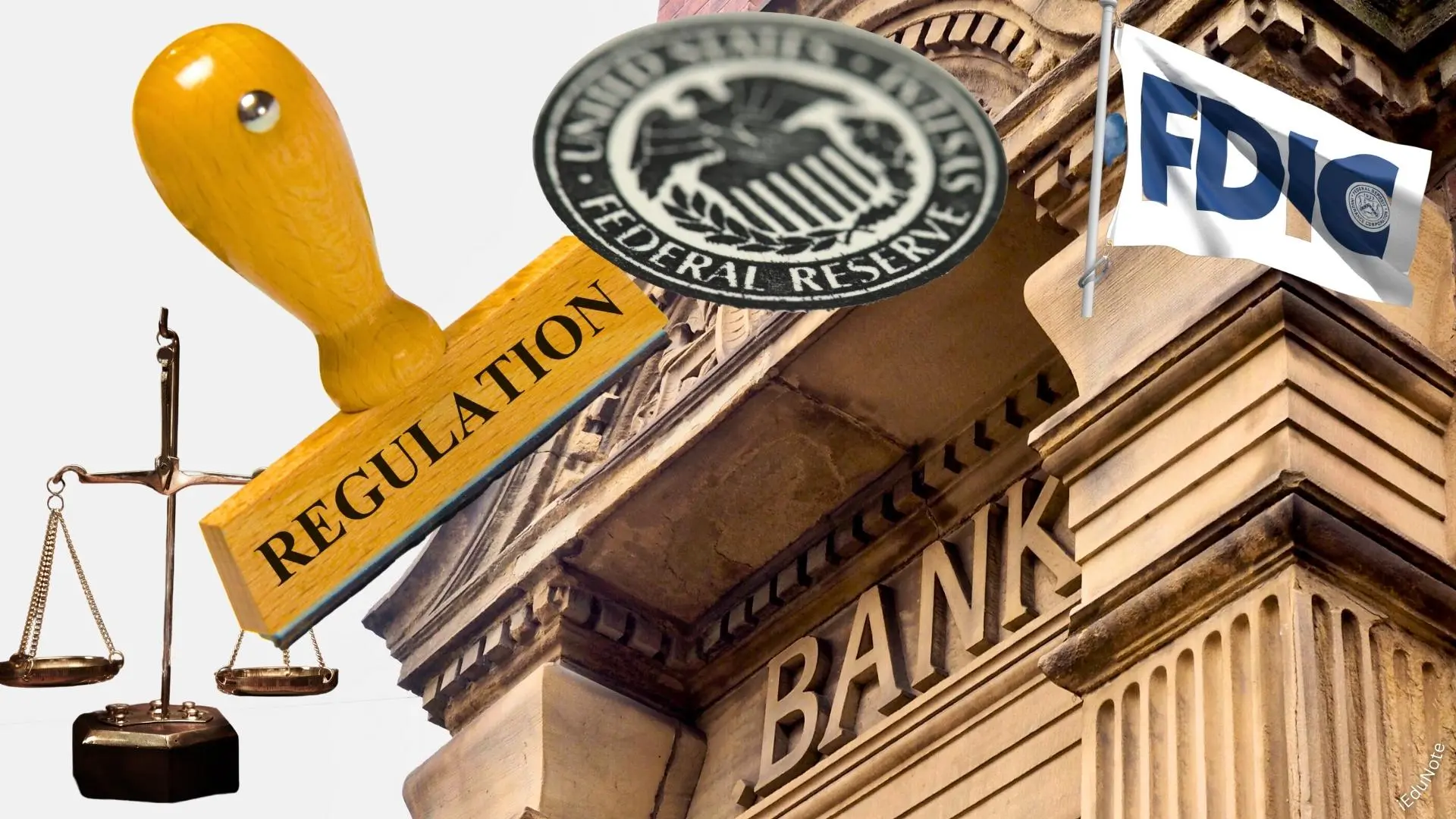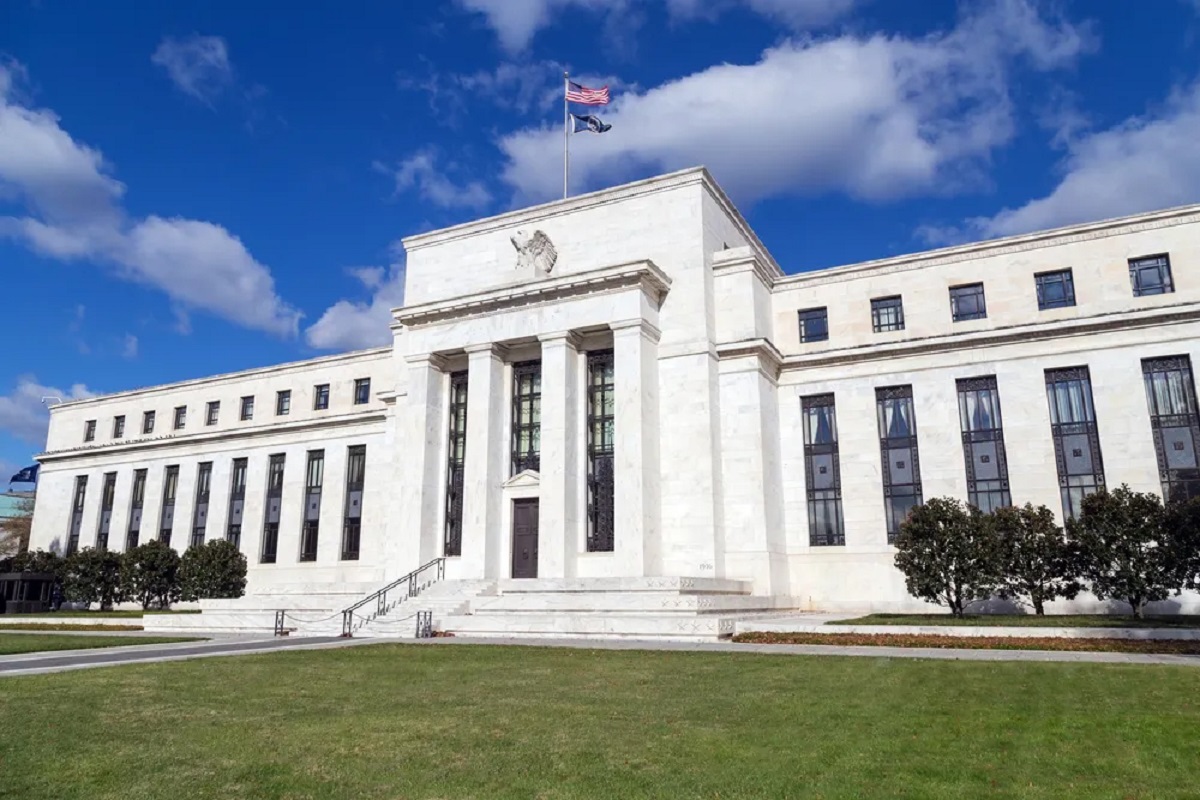Introduction
The Emergency Banking Act, enacted on March 9, 1933, was a significant piece of legislation that played a crucial role in addressing the severe economic turmoil of the Great Depression. The Great Depression, which began in 1929, had a devastating impact on the American economy, leaving thousands of banks on the verge of collapse, causing widespread panic among depositors, and leading to a significant decline in public confidence in the banking system.
In response to the dire situation, President Franklin D. Roosevelt took swift action to restore stability to the nation’s financial system. The Emergency Banking Act was one of the first measures implemented as part of Roosevelt’s New Deal policies, aimed at reviving the economy and alleviating the hardships faced by the American people.
The purpose of this article is to examine the background and context of the Great Depression, the need for the Emergency Banking Act, the enactment of the legislation, and, most importantly, the purpose behind it. By understanding the driving forces behind the Emergency Banking Act, we can gain insight into its significance and impact on the economy.
It is important to note that the Emergency Banking Act was not a standalone solution to the economic crisis but rather part of a broader strategy to address the multifaceted challenges facing the nation. The act played a pivotal role in restoring public confidence in the banking system and stabilizing the economy, laying the groundwork for subsequent recovery and regulatory measures.
Join us as we delve into the historical context and examine the purpose and impact of the Emergency Banking Act. Through an understanding of this critical legislation, we can gain valuable insights into the role of government intervention in times of economic crisis and the measures undertaken to rebuild ailing financial systems.
Background
The Great Depression was one of the most significant economic crises in the history of the United States. It began with the stock market crash in October 1929, which sent shockwaves through the financial system and triggered a chain reaction that led to a nationwide economic downturn. The effects of the Depression were felt across various sectors, with businesses shutting down, unemployment rates skyrocketing, and people losing their life savings.
Amidst the economic chaos, the banking sector suffered severe consequences. Many banks had invested heavily in the stock market, and when the market collapsed, it resulted in massive losses for these institutions. Continuous withdrawal of deposits by panicking customers further weakened their financial position, leading to a wave of bank failures.
This wave of bank failures exacerbated the crisis as it eroded public trust and confidence in the banking system. People became fearful of losing their savings and began to hoard cash, leading to a significant reduction in the circulation of money. This, in turn, hampered economic activity and deepened the overall economic downturn.
The mounting financial instability compelled President Franklin D. Roosevelt to take decisive action. Upon assuming office in March 1933, he declared a “bank holiday,” effectively shutting down all banks to prevent further panic and allow for the implementation of safeguards. This temporary suspension of banking activities provided breathing space for the government to devise a comprehensive plan to restore stability to the financial system.
Against this backdrop, the Emergency Banking Act was introduced as a crucial step towards reestablishing public confidence and reviving the banking sector. The act aimed to address the structural weaknesses in the banking system that had led to the crisis and set the foundation for a more secure and regulated financial sector.
Now that we have explored the backdrop of the Great Depression and its impact on the banking sector, let’s delve deeper into the need for the Emergency Banking Act and the specific challenges it sought to address.
The Great Depression
The Great Depression was an unprecedented period of economic downturn and financial hardship that began in the United States in October 1929 and spread globally, lasting for approximately a decade. It was characterized by a severe contraction in economic activity, skyrocketing unemployment rates, and a widespread collapse of the financial system.
The underlying causes of the Great Depression were complex and multifaceted. The stock market crash of 1929, known as “Black Tuesday,” marked the beginning of the downward spiral. As stock prices plummeted, millions of investors saw their wealth vanish overnight. This caused a sharp decline in consumer spending and business investment, leading to a contraction in production and widespread layoffs.
One of the key factors contributing to the severity of the Great Depression was the imbalanced distribution of wealth. The 1920s had seen a significant increase in income inequality, with a small portion of the population amassing substantial wealth, while the majority struggled to make ends meet. This imbalance created a fragile economic foundation, as the majority of the population had limited purchasing power.
Furthermore, the global economy was also impacted by protective tariff policies implemented by various countries, such as the Smoot-Hawley Tariff Act in the United States. These trade barriers reduced international trade, leading to a decline in exports and exacerbating the economic downturn.
The Great Depression had far-reaching consequences that extended beyond the economic realm. It had a profound impact on people’s lives, creating widespread poverty, homelessness, and food insecurity. Many individuals and families lost their homes and savings, and the unemployment rate reached staggering levels, peaking at approximately 25% during the height of the crisis.
The financial sector, particularly the banking system, bore the brunt of the economic collapse. As businesses and individuals struggled to repay loans, banks faced a sharp increase in loan defaults, weakening their financial position. The failure of banks eroded public trust and confidence in the banking system, leading to widespread bank runs, where depositors rushed to withdraw their savings, further exacerbating the crisis.
In the next section, we will explore the specific reasons why the Emergency Banking Act became necessary during this tumultuous time, and how it aimed to address the challenges faced by the banking sector.
The Need for the Emergency Banking Act
During the Great Depression, the United States faced a dire banking crisis. The failure of numerous banks, coupled with widespread panic and a loss of public confidence, created a state of financial chaos. It became evident that immediate action was required to stabilize the banking system and restore trust among depositors.
One of the primary reasons for the urgent need for the Emergency Banking Act was the wave of bank failures that swept across the country. As the economic situation worsened, many banks faced insurmountable financial challenges. They had invested heavily in risky assets, including stocks, and suffered massive losses when the market crashed. Additionally, the banks faced a high volume of loan defaults as businesses struggled to repay their debts, further weakening their financial positions.
The failure of these banks triggered a domino effect, as depositors rushed to withdraw their savings out of fear that their banks might collapse. This mass withdrawal of funds, known as a bank run, exacerbated the crisis and put even more pressure on the remaining banks that were still functioning. As a result, people began hoarding cash, leading to a significant reduction in the money supply and a further decline in economic activity.
The Emergency Banking Act was designed to address these issues by providing a framework for the reopening and stabilization of the banking system. One of its critical components was the declaration of a nationwide bank holiday, which temporarily closed all banks and prevented further withdrawals. This pause allowed the government to evaluate the financial health of each bank, identify those that were sound, and help strengthen or close those that were in distress.
Furthermore, the Emergency Banking Act empowered the President to authorize the Treasury Department to provide financial assistance to solvent banks. This assistance came in the form of loans and capital injections, aimed at bolstering the financial position of viable institutions and restoring public confidence in the banking system.
Additionally, the act introduced stricter regulations and oversight to prevent future bank failures. It established the Federal Deposit Insurance Corporation (FDIC), which provided deposit insurance to protect individuals’ bank deposits and instill confidence in the safety and security of the banking system.
The need for the Emergency Banking Act stemmed from the recognition that the banking crisis was exacerbating and prolonging the economic downturn. By implementing immediate measures to stabilize the financial sector and restore public confidence, the act aimed to lay the groundwork for economic recovery and prevent further damage to the economy.
In the next section, we will explore the process and key components of the Emergency Banking Act and how it aimed to achieve its intended purpose.
Enactment of the Emergency Banking Act
The Emergency Banking Act was swiftly enacted by the United States Congress and signed into law by President Franklin D. Roosevelt on March 9, 1933. The urgency of the situation necessitated immediate action, and the act was implemented within days of President Roosevelt taking office.
On the evening of March 4, 1933, President Roosevelt delivered his inaugural address, in which he highlighted the need for bold and decisive action to address the banking crisis. His words resonated with the American people, as there was a widespread understanding that bold measures were essential for stabilizing the economy and restoring public confidence.
Shortly after his address, President Roosevelt declared a four-day nationwide bank holiday that went into effect on March 6, 1933. During this period, banks were closed to prevent further runs and to allow time for Congress to pass the necessary legislation.
The Emergency Banking Act was introduced in Congress on March 9, 1933, and quickly gained bipartisan support. The act was passed with overwhelming majorities in both the House of Representatives and the Senate, demonstrating the sense of urgency felt by lawmakers to restore stability to the banking system.
One of the significant provisions of the act was that it provided the President with broad powers to address the crisis. It allowed the President, through the Secretary of the Treasury, to determine which banks were sound and could reopen under the guidance of the government. The act also empowered the President to close and reorganize unstable banks, ensuring the prudent management of financial institutions.
Upon signing the Emergency Banking Act into law, President Roosevelt immediately began implementing its provisions. On March 13, 1933, a few days after the act was passed, many banks began to reopen under strict regulations and scrutiny by government authorities. To instill confidence among the public, President Roosevelt delivered a radio address on the same day, explaining the measures taken to stabilize the banking system and urging Americans to trust in the reopened banks.
The reopening of banks was a critical milestone in the recovery process. The act allowed solvent banks to resume operations, facilitated the flow of money in the economy, and restored assurance among depositors.
While the Emergency Banking Act was not a comprehensive solution to the economic crisis, it served as a crucial step in restoring stability to the financial system. By implementing swift and decisive measures, the act laid the groundwork for subsequent New Deal policies and helped pave the way for economic recovery and regulatory reforms.
In the following section, we will explore the purpose of the Emergency Banking Act and how it aimed to restore trust and confidence in the banking system.
Purpose of the Emergency Banking Act
The Emergency Banking Act was enacted with a specific purpose in mind – to restore trust and confidence in the banking system and address the underlying challenges that had led to the banking crisis during the Great Depression. The act aimed to achieve this purpose through a series of measures designed to stabilize the financial sector and protect the interests of depositors.
One of the primary goals of the Emergency Banking Act was to rebuild public trust in banks. The widespread bank failures and subsequent bank runs had eroded public confidence in the banking system. The act aimed to alleviate these concerns by empowering the government to assess the financial health of banks, determine their viability, and reopen those that were deemed sound. By providing a rigorous evaluation process and strict oversight of reopened banks, the act sought to assure depositors that their money was secure.
Another important objective of the act was to stabilize the banking sector and prevent further bank failures. The act provided the President with the authority to close and reorganize banks that were deemed financially unstable. By intervening in the management of these institutions, the government aimed to prevent their collapse and protect the interests of depositors. This measure was crucial in restoring stability to the banking system.
Additionally, the Emergency Banking Act aimed to address the underlying issues that had contributed to the crisis, such as risky banking practices and lack of regulation. The act introduced stricter regulations and oversight, including the establishment of the Federal Deposit Insurance Corporation (FDIC). The FDIC provided deposit insurance, ensuring that depositors’ funds were protected up to a certain limit. This measure aimed to instill confidence in the safety of the banking system and prevent future bank runs.
Furthermore, the act sought to restore the flow of money in the economy. The bank closures and hoarding of cash during the crisis had led to a significant reduction in economic activity. The reopening of banks under the act’s provisions allowed for the resumption of normal banking operations, including the extending of loans and the circulation of money. This helped stimulate economic activity and was a crucial step towards recovery.
Overall, the purpose of the Emergency Banking Act was to restore trust and stabilize the banking system in the midst of the Great Depression. By addressing the concerns of depositors, implementing stricter regulations, and enabling the flow of money in the economy, the act aimed to restore confidence and set the stage for economic recovery.
In the next section, we will explore how the Emergency Banking Act contributed to stabilizing the banking system and its role in the broader efforts to address the economic crisis.
Restoring Trust and Confidence
One of the primary objectives of the Emergency Banking Act was to restore trust and confidence in the banking system, which had been severely undermined during the Great Depression. The act implemented several measures aimed at rebuilding public faith in financial institutions and reassuring depositors that their money was safe.
One key mechanism through which the act sought to restore trust was the process of evaluating banks and reopening those that were deemed financially sound. Under the supervision of the government, banks were subjected to rigorous scrutiny to determine their viability. This evaluation process, combined with the reassurances provided by the government, helped to instill confidence among depositors that the reopened banks were reliable and secure.
The act also introduced strict regulations and oversight to prevent future banking crises. The establishment of the Federal Deposit Insurance Corporation (FDIC) was a pivotal component of these regulatory efforts. The FDIC provided deposit insurance, guaranteeing the safety of individual bank deposits up to a certain limit. This insurance coverage provided peace of mind to depositors, assuring them that even in the event of another crisis, their funds would be protected.
Furthermore, the act emphasized transparency and accountability within the banking system. Banks were required to disclose their financial health and follow stricter reporting standards. This increased transparency was vital in rebuilding trust, as it allowed depositors to make more informed decisions and have greater confidence in the financial institutions they were dealing with.
The reopening of banks and the subsequent resumption of regular banking activities also played a crucial role in restoring trust. The bank holidays provided a temporary break, allowing for necessary evaluations and reforms to take place. As banks gradually reopened under the act’s provisions, customers saw that their funds were accessible and that banking operations were being conducted in a more secure and regulated manner. This helped reinforce the notion that the banking system was on a path to stability.
Overall, the Emergency Banking Act played a significant role in restoring trust and confidence in the banking sector. By implementing strict regulations, providing deposit insurance, and conducting thorough evaluations of banks, the act aimed to reassure depositors and rebuild faith in the financial system. These measures were crucial in stabilizing the banking sector and laying the groundwork for economic recovery.
In the next section, we will delve into how the Emergency Banking Act contributed to stabilizing the broader financial system and the role played by the Federal Reserve in this process.
Stabilizing the Banking System
The Emergency Banking Act played a crucial role in stabilizing the banking system during the Great Depression. The act implemented measures aimed at addressing the underlying challenges that had led to the crisis and ensuring the long-term stability of financial institutions.
One of the key components of the act was the evaluation and reopening of banks deemed financially sound. The government conducted thorough assessments of banks’ financial health, scrutinizing their assets, liabilities, and overall stability. Only those banks that met the criteria established by the government were permitted to reopen. This process helped weed out weak and failing banks, preventing further systemic risks and instilling confidence in the remaining institutions.
Moreover, the Emergency Banking Act provided the government with the authority to intervene in the management of banks facing financial difficulties. It allowed for the closure and reorganization of unstable banks, ensuring they were properly managed and potentially preventing their collapse. By addressing the root causes of instability within the banking system, the act contributed to the overall stability of the financial sector.
In addition to addressing the immediate challenges, the act implemented measures to prevent future banking crises. It introduced stricter regulations and oversight, including the establishment of the Federal Deposit Insurance Corporation (FDIC). The FDIC provided deposit insurance, guaranteeing the safety of individual bank deposits. This insurance coverage instilled confidence among depositors, assuring them that their funds were protected even in the event of another crisis. The FDIC’s presence not only restored trust but also helped stabilize the banking system by mitigating the potential for bank runs.
The act also had a significant impact on improving the asset quality of banks. It aimed to cleanse the balance sheets of troubled banks by providing financial assistance and facilitating the disposal of nonperforming assets. This cleansing process helped strengthen the financial position of banks, enabling them to resume lending and support economic activity.
Furthermore, the Emergency Banking Act facilitated greater transparency and accountability within the banking system. Banks were required to disclose their financial information and adhere to stricter reporting standards. This level of transparency not only provided a clearer picture of the financial health of banks but also allowed regulators and the public to monitor and evaluate their operations. Increased transparency helped prevent excessive risk-taking and fostered a more resilient banking system.
Through these various measures, the Emergency Banking Act played a crucial role in stabilizing the banking system during the Great Depression. It addressed the immediate challenges facing banks, implemented regulatory reforms, and provided a framework for long-term stability. These efforts were instrumental in restoring confidence, rebuilding the banking sector, and laying the foundation for economic recovery.
In the next section, we will explore the role played by the Federal Reserve in conjunction with the Emergency Banking Act in addressing the economic challenges of the Great Depression.
The Role of the Federal Reserve
During the Great Depression, the Federal Reserve played a crucial role in conjunction with the Emergency Banking Act in addressing the economic challenges and stabilizing the financial system. The Federal Reserve, as the central bank of the United States, played a key role in implementing monetary policy and providing liquidity to banks.
One of the primary functions of the Federal Reserve during the crisis was to provide liquidity to banks that were facing financial difficulties. The Federal Reserve acted as a lender of last resort, offering loans to banks in need of funds to meet depositor demands or cope with other financial strains. By providing liquidity support, the Federal Reserve helped alleviate the pressure on banks and prevent their collapse.
The Federal Reserve also played a role in implementing monetary policy measures to stimulate economic activity. In coordination with the government’s efforts to stabilize the banking system, the Federal Reserve reduced interest rates and utilized open market operations to increase the money supply. These actions were aimed at promoting borrowing and investment, which were crucial for economic recovery.
Additionally, the Federal Reserve worked closely with the government and the newly established regulatory institutions, such as the FDIC. The Federal Reserve provided guidance and support in implementing the regulations outlined in the Emergency Banking Act. It collaborated with the FDIC to ensure better supervision and compliance, enhancing the overall stability and soundness of the banking system.
Furthermore, the Federal Reserve played a part in restoring public confidence in the banking system. Through its role as the lender of last resort and its decisive actions, the Federal Reserve demonstrated its commitment to maintaining the stability and integrity of the financial sector. This commitment helped rebuild trust among depositors and other stakeholders, contributing to the overall stabilization of the banking system.
The close cooperation between the Federal Reserve and the government, along with the complementary efforts of the Emergency Banking Act, created a coordinated approach towards stabilizing the financial system and addressing the economic challenges of the Great Depression. By working hand in hand, these institutions provided the necessary support, regulation, and guidance to revive the banking sector and set the stage for economic recovery.
In the next section, we will summarize the key points discussed in this article and highlight the significance of the Emergency Banking Act in the broader context of the Great Depression.
Conclusion
The Emergency Banking Act, enacted during the height of the Great Depression, played a pivotal role in addressing the severe economic turmoil and stabilizing the financial system. By implementing swift and decisive measures, the act aimed to restore trust and confidence in the banking system, which had been severely undermined by widespread bank failures and the loss of public confidence.
Through the evaluation and reopening of sound banks, the act instilled confidence among depositors, reassuring them that their funds were safe and secure. The establishment of the Federal Deposit Insurance Corporation (FDIC) provided deposit insurance, further protecting the interests of depositors and mitigating the risk of bank runs.
Additionally, the act implemented regulations and oversight to prevent future banking crises, striving to establish a more stable and resilient financial sector. The involvement of the Federal Reserve, as the central bank, was crucial in providing liquidity support to banks and implementing monetary policy measures to stimulate economic activity.
The Emergency Banking Act was not a standalone solution but part of a larger strategy to address the economic downturn and bring about nationwide recovery. It set the foundation for subsequent New Deal policies and reforms, which aimed to rebuild the economy, create jobs, and restore prosperity.
In summary, the Emergency Banking Act played a vital role in stabilizing the banking system during the Great Depression. By restoring public confidence, implementing regulations, and working in conjunction with the Federal Reserve, the act provided a framework for stability, laying the groundwork for economic recovery. It serves as a testament to the power of decisive government action to address a national crisis and restore trust in the financial system.

























